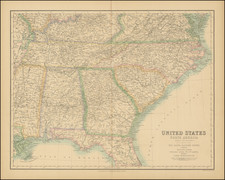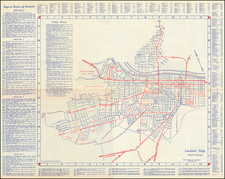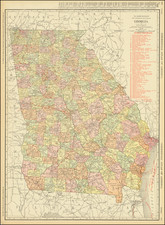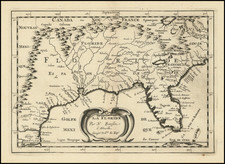Nice example of this important early map of Savannah County, one of the earliest printed maps of Georgia.
The original charter which established Georgia as an independent trustee colony, under the British Crown, covered the land between the Savannah and Altamaha Rivers from the Atlantic Ocean to the "south seas" (Pacific Ocean). However, from the start, only a small portion of the Colony was open to European settlement. For example the Sea Isles of Ossabaw, Sapelo and St. Catherines were reserved to the Creek Indians for hunting, bathing and fishing, as well as the tract of land near Piple Makers Bluff, upstream from Savannah, which is shown on this map as "Indian Lands".
Bearing the Royal Arms of George II, this fine early map shows the coast of Georgia from Trench's Island (Hilton Head) in the north, to Ossabaw sound in the south, with Palachocolas shown on the Carolina side of the Savannah River at the upper left corner of the map. The region south of the Savannah River is shown covered in trees with settlements, including Savannah, Ebenezer, Thunderbolt, Fort Argyle and more, and rivers and roads identified.
The map depicts the earliest features of the town of Savannah, including the wards and things. Beyond the wards, the 5 acre garden lots are shown and further out are the farm buildings representing the 50 acre parcels of land available to each colonist, with larger grants up to 500 acres available to colonists who could fund their own transit and bring at least ten servants available for military duty.
In 1728, three years before conceiving the Georgia colony, Oglethorpe chaired a Parliamentary committee on prison reform. The committee documented horrendous abuses in three debtors' prisons. As a result of the committee's actions, many debtors were released from prison with no means of support. Oglethorpe viewed this as part of the larger problem of urbanization, which was depleting the countryside of productively employed people and depositing them in cities, particularly London, where they often became impoverished or resorted to criminal activity. To address this problem, Oglethorpe and a group of associates, many of whom served on the prison committee, petitioned in 1730 to form the Trustees for the Establishment of the Colony of Georgia in America. The petition was finally approved in 1732, and the first group of colonists, led by Oglethorpe, departed for the New World in November.
Oglethorpe and the Trustees formulated a contract, multi-tiered plan, for the settlement of Georgia (see the Oglethorpe Plan). The plan framed a system of "agrarian equality" designed to support and perpetuate an economy based on family farming and prevent social disintegration associated with unregulated urbanization. Land ownership was limited to fifty acres, a grant that included a town lot, a garden plot near town, and a forty-five acre farm. Self-supporting colonists were able to obtain larger grants, but such grants were structured in fifty acre increments tied to the number of indentured servants supported by the grantee. Servants would receive a land grant of their own upon completing their term of service. No person was permitted to acquire additional land through purchase or inheritance.
Oglethorpe and the first colonists arrived at South Carolina on the ship Anne in late 1732, and settled near the present site of Savannah, Georgia, February 12, 1733. He negotiated with the Yamacraw tribe for land and established a series of defensive forts, most notably Fort Frederica. Oglethorpe became great friends with Chief Tomochichi, who was the chief of the Yamacraw.
While Oglethorpe's petition was still being considered, Leopold von Firmian, the Catholic Prince and Archbishop of Salzburg, issued an Edict of Expulsion, ordering all Protestants to leave his domain. A group of Salzberger exiles, under the leadership of Samuel Urlsperger, found refuge in the German city of Augsburg. When Oglethorpe heard of Ulsperger's exiles, he suggested his colony as a haven for distressed Saltzburgers and other persecuted Protestants, and the charter was signed by George II the following year.
Oglethorpe and the earliest colonists arrived in Georgia in February 1733, barely a year before the first fifty Salzbergers landed in March 1734. By the following May, the Salzbergers were established at Ebenezer, about twenty five miles north of Savannah.
De Vorsey notes that as early as September 1734, Oglethorpe was sending maps of Georgia to the continent, where German Protestants were being encouraged to emigrate to Georgia. The first of these was a manuscript map of the County of Savannah, forwarded to the Georgia Trustees in London in February 1735, which was then used as the prototype for this printed map published later that year in a promotional tract by Ulsperger to encourage Salzberger immigrants to Georgia.
The map offered here locates the original settlement of Savannah, along with flags showing the outlying forts established by Oglethorpe. The Road to Charles Town is shown, along with the early settlements.
A foundational map of Georgia.












![Map of the States of Alabama and Georgia [Inset Plan of Savannah]](https://storage.googleapis.com/raremaps/img/small/91838.jpg)

